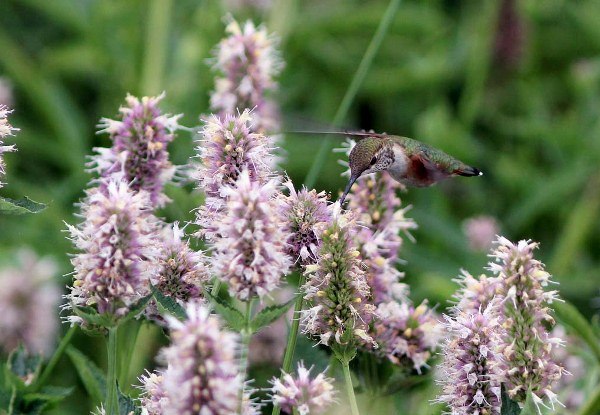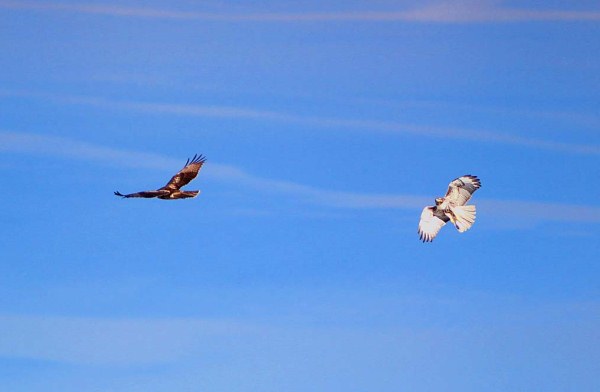From the Field
October 16: Rich Hoyer on his scouting trip to the "Manu Route" in Peru
I've just finished a quick run through the so-called "Manu Route," perhaps the best transect down the wet, Amazon-draining slope of the Andes in Peru (and maybe in the entire Andean chain). The diversity of life from top to bottom in plants, butterflies, frogs, and birds never ceases to amaze me. While this trip certainly helped prepare and excite me for leading my WINGS tour here next year, the purpose of this trip was to inspect and consult on the viability and potential of two properties that wish to open up to the birding and ecotourism market. The lodges we stay at are already great, access to habitats very good, and our current itinerary thoughtfully crafted, but I'm excited about the potential these properties will offer in a couple years' time. We might actually visit one next year on a day trip while based at Amazonía Lodge. In any event, you just can't go wrong on the Manu Route. The mountain pass from the dry to the wet slope isn't so high that you have to worry about altitude sickness, most of the habitat along the altitude gradient is protected and in excellent condition, and the road has relatively little traffic, not being a major paved highway to any city of importance. We saw about 530 species of birds in a quick 11 days. It was a bit frustating that on one day we had to drive through the really productive middle elevations (our regular tour stops for a couple nights at the Cock-of-the Rock Lodge), but our driver was good to make some short stops for a couple nice birds perched right over the road – the Blue-banded Toucanet and the Golden-headed Quetzal pictured below.
We saw most all of the bamboo specialties at Villa Carmen, but the highlight was our last bird on our second day – a super-rare Gray-bellied Hawk with just barely enough light to photograph it. Then we had four days at the Los Amigos research station on the Madre de Dios, including an overnight at their camp some 30 miles up the Los Amigos River. It was on our way back down that Daniel spotted a Harpy Eagle perched by the river. It stayed long enough for us to get out of the boat and admire its massiveness, and then it flew right over us. Few people have seen a wild Harpy Eagle fly over so close. Plants, butterflies, moths, and other critters added to the interest, and I include a cool looking syrphid fly below as an example of the amazing diversity.





October 7: Jon Feenstra from his and Rich Hoyer's scout of southern Ecuador
Since the last update we have visited the three Jocotoco Foundation lodges south and west of Loja. The Tapichalaca Reserve in the highlands is the home of the flagship species of the reserves, the Jocotoco Antpitta which the lodge staff now has lured out of the forest for worms. The reserve itself has great birding, but is also partly within the Rio Maranon watershed and has easy access to birds that have a very limited range in Ecuador like Rufous-fronted Thornbird and Maranon Thrush. From the cool wet forests of Tapichalaca we then spent the next two days in arid thorn-scrub with entirely different bird life. Long-tailed Mockingbirds were now the common species and we also saw Elegant Crescentchest and Rufous-necked Foliage-Gleaner and Tumbesian endemics like Tumbes Hummingbird, Tumbesian Tyrranulet, and Tumbes Sparrow. At the Jorupe Reserve we also saw a pair of Gray-backed Hawks and a surprisingly confiding Pale-browed Tinamou eating corn from the lodge porch! Next it was back into the wet country of the rainforest lowlands at the Buenaventura Reserve. We started today with a visit to the Long-wattled Umbrellabird lek where we watched one male emit his foghorn-like calls. After that we spent the rest of the day on the main trail through the reserve where we found about 130 species including: Barred Puffbird, White-tipped Sicklebill, and Club-winged Manakins. All good so far, tomorrow we head back toward civlilization spending some time to bird the coast - and see another entirely new set of birds! Images below: Jocotoco Antpitta, Tumbes Sparrow, Gartered (Violaceous) Trogon, Collared Antshrike




October 3: James Lidster from his just completed tour to Portugal
It seems like just 5 days ago that we arrived in Lisbon. In fact it was, and yet within an hour's drive of the city we had amazing encounters with such Iberian specialties as Great (flock, below) and Little Bustards, Spanish Imperial and Bonellis's Eagles, Black Vulture, Black-shouldered Kites (below), Black-bellied Sandgrouse, Blue Rock Thrush, Squacco Heron (below) as well as thousands of Greater Flamingos, hundreds of egrets, ibis, spoonbills and shorebirds - White Stork (below) heading south. We compared Crested and Thekla Larks, were glared at by Little Owls, saw large numbers of Azure-winged Magpies and more Mediterranean species such as Hoopoe, Red-rumped Swallow and Serins. Our local guide advised us - superbly - about local customs and history; and this, mixed with delicious local foods and wines, made for a quite perfect long weekend in Portugal!


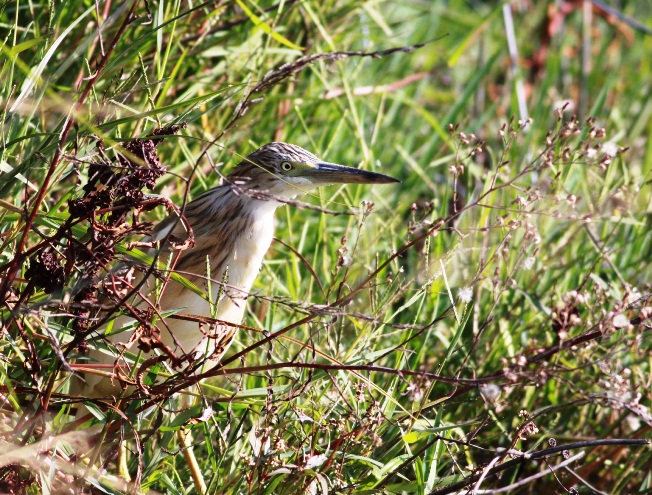
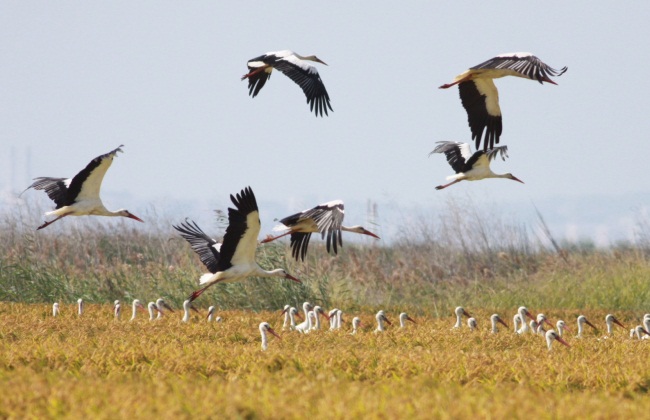
September 27: Jon Feenstra on his and Rich Hoyer's scouting trip to southern Ecuador
Rich and I have spent the last five nights on the birding path in southern Ecuador. We began above the treeline near Cuenca, traversed south along the Andean ridges to Loja then dropped down to the east into the foothills where we spent three nights at Copalinga lodge birding the Rio Bombuscaro area of Podocarpus National Park. The elevation is about 1000 meters positioning us in the Amazonian foothills and the birds there are a nice mix of lowland, highland, and foothill species. We saw the local specialties White-breasted Parakeet and Foothill Elaenia plus we found a nest of an Equatorial Graytail - a life bird for both of us!
From Copalinga we continued east to the Cordillera del Condor, an outlying sedimentary ridge near the Peruvian border with a number of birds that are either unique to the area or are at a range limit in Ecuador. It didn't take us long to find Orange-throated Tanagers and though we missed a few specialties we connected with White-bellied Pygmy-Tyrant, a bird recently discovered here several hundred kilometers north of its previously known range. Black-and-white Tody-Flycatchers and Dusky-cheeked Foliage-Gleaners were both surprisingly common. Now we're in Loja and tomorrow we leave for Tapichalaca Reserve in southern Loja province.
I've attached a few cool photos: Red-rumped Bush-Tyrant in the highlands (El Cajas National Park) near Cuenca, Coppery-chested Jacamar in Podocarpus National Park, Spangled Coquette at Copalinga Lodge, and Orange-throated Tanager near Cabanas Yankuam.
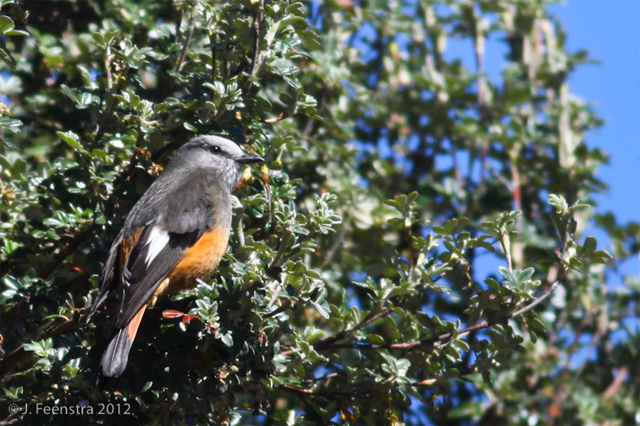
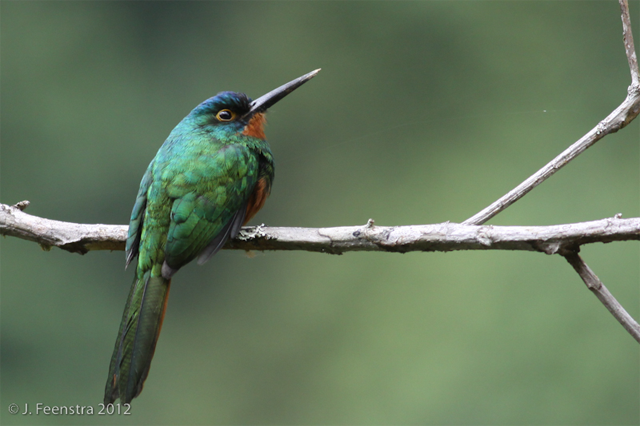
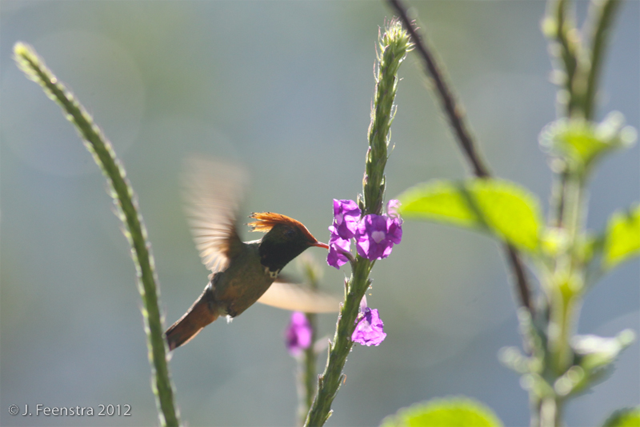

September 24: Steve Rooke from his just completed tour to South Africa
We began our Kalahari to the Cape tour in fine form with a superb day in the eponymous desert with Leopard, Cheetah, Cape Fox, African Wild Cat and Meerkats competing with the likes of Kori Bustard, Secretarybird, hordes of Namaqua and Burchell's Sandgrouse, and Crimson-breasted Shrike for our attention. We ended that perfect day with a traditional South African braai prepared by our hosts. From there we wandered through Bushmanland finding the rare Red Lark, then on to Namaqualand where the spring wild flowers were simply amazing. Moving down the west coast we entered the vast Karoo where we sought out Crimson-breasted Warbler and Karoo Eremomela before watching Blue Cranes on our way to Cape Town. Here a fantastic pelagic gave us Northern Royal, Wandering, Black-browed and Shy Albatrosses plus masses of other seabirds. Elsewhere we saw Cape Rockjumpers and watched Cape Sugarbirds and sunbirds feeding amongst the flowers of Kirstenbosch Botanical Gardens. A series of images from the tour follow: Leopard, Spike-heeled Lark, flowers (3), Orange-breasted Sunbird, Blue Crane and Bonteboks, seabirds off Cape Town and a Wild Cat.
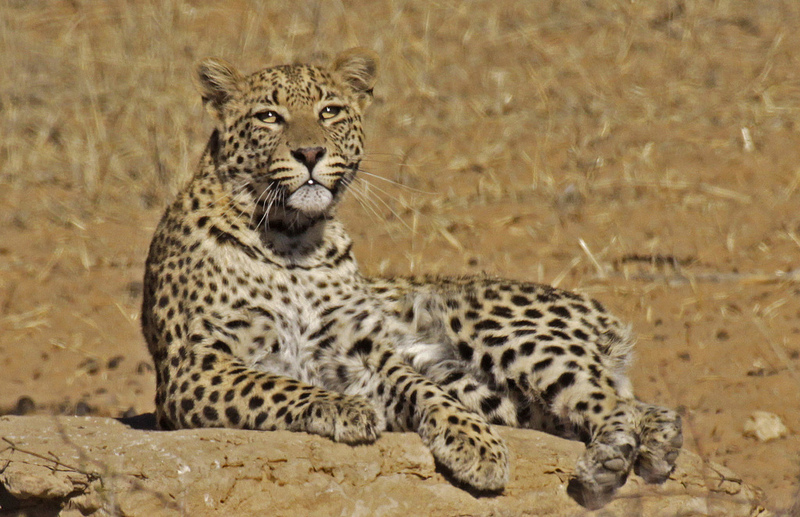
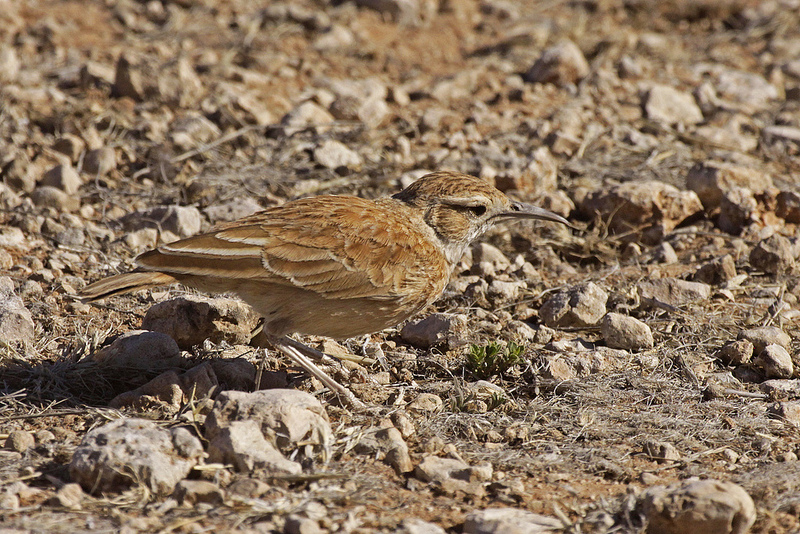
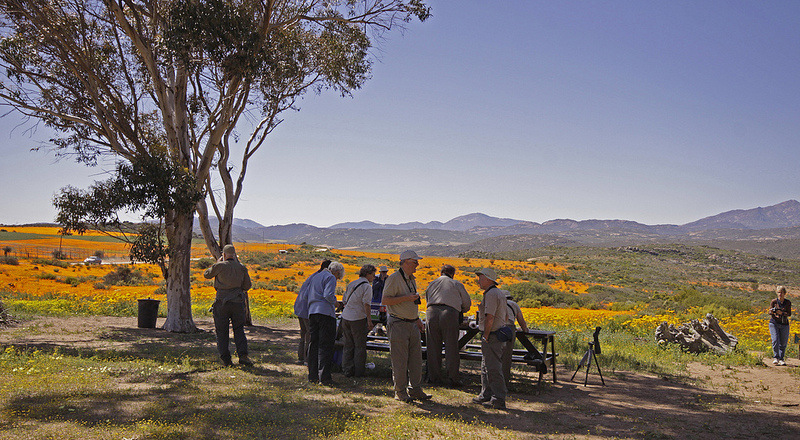
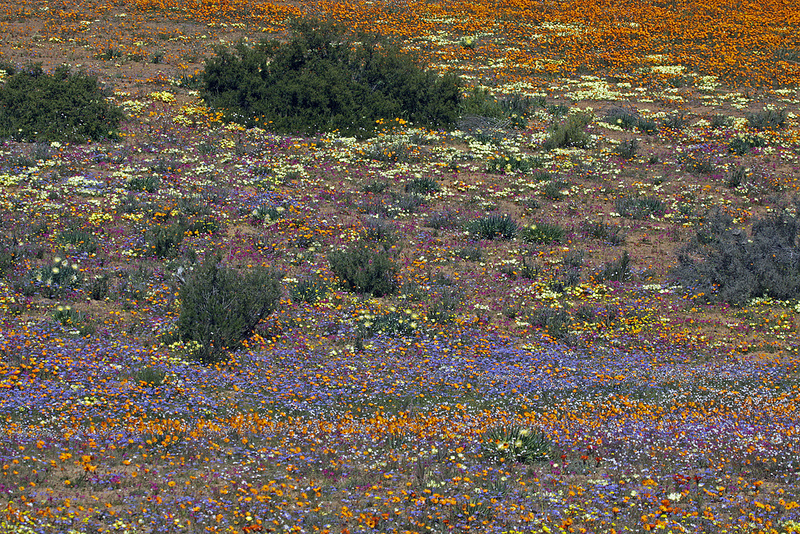
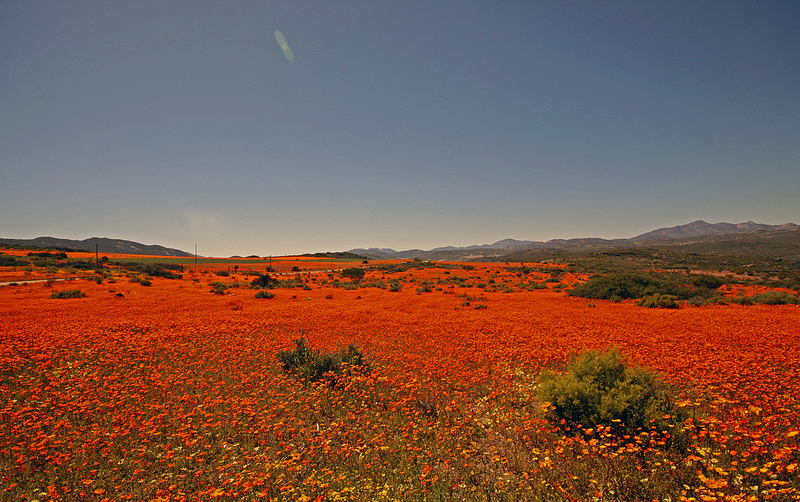
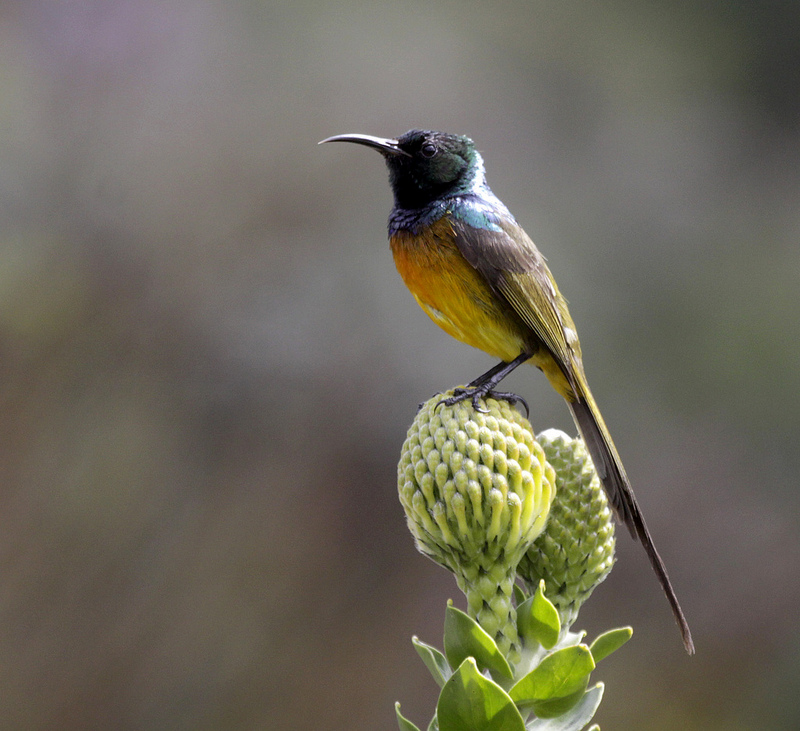
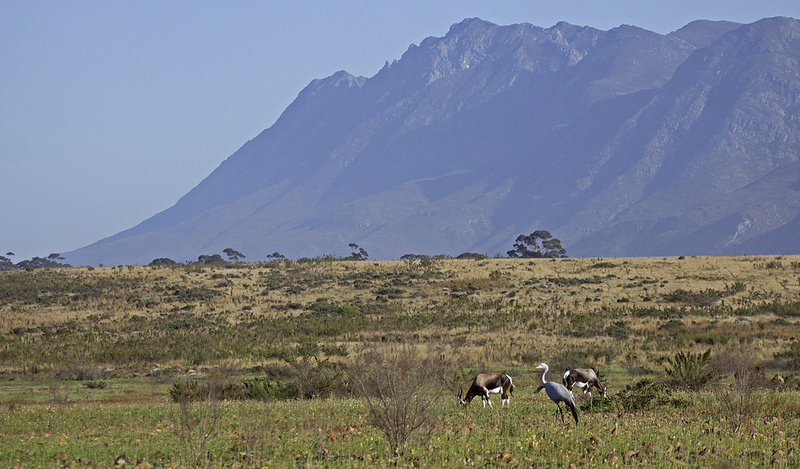
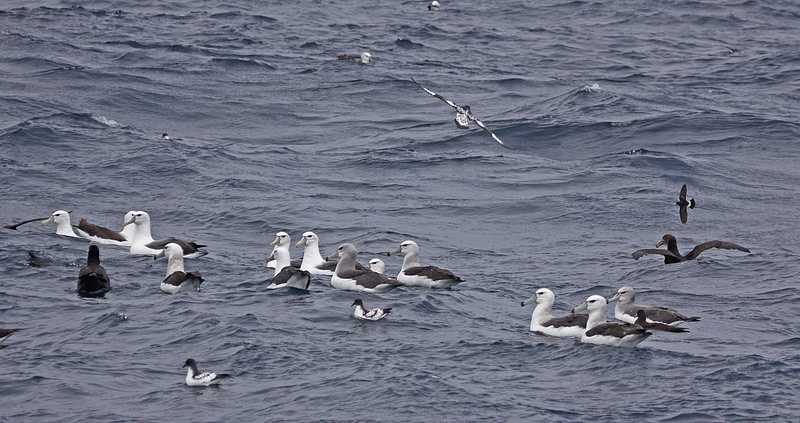
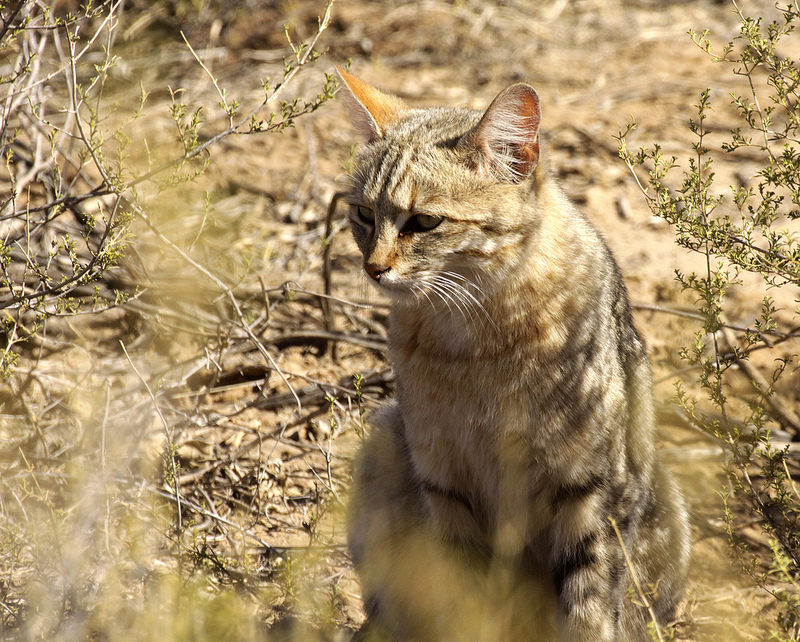
September 21: David Fisher on his just-finished tour to Colombia
Our recent three-week tour went very well indeed; we ended up seeing 601 species, including nearly 50 of Colombia's 70 or so endemics. These endemics included species which have only just been described such as Antioquia Wren (in The Auk three months ago); others that are about to be described, such as Altos Pisonus Tapaculo and Santa Marta Antbird, a described but very distinctive (vocally at least) form of Rufous Antpitta; and the lovely Santa Marta Screech-Owl (below) which has been known about for some time, but hasn't yet been published. When birding in Colombia it often feels as though there are poorly-known birds around almost every corner and that one might just discover something completely new. Exciting stuff!
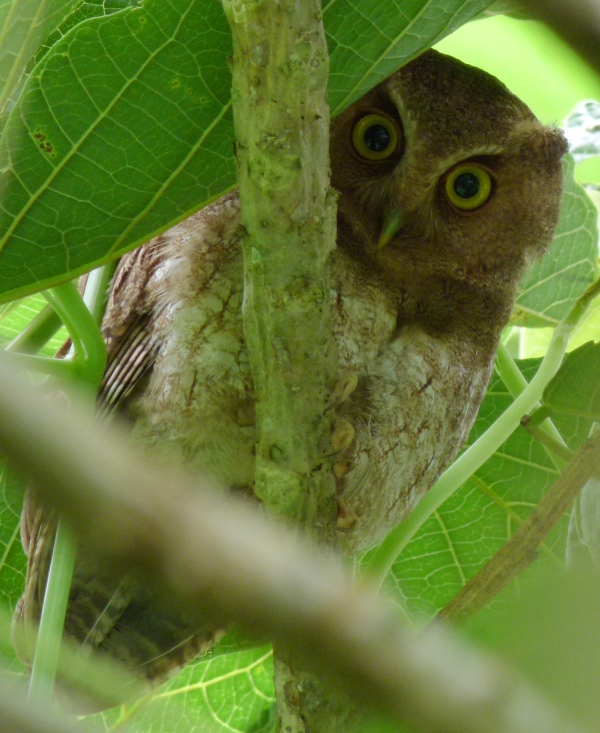
September 10: Derek Lovitch from his tour to the Maine Coast and Monhegan Island
This tour is designed to experience the wonders of migration, and Day 1 did not dissapoint. We began with over 1,000 passerines engaged in a "Morning Flight" at Cousin's Island near Portland. 500 Blackpoll Warblers and 150 Northern Parulas led the way, along with a single Dickcissel. Next up, shorebirds: hundreds of Semipalmated Sandpipers, a dozen White-rumped Sandpipers, and 2 rare Western Sandpipers - often within arm's reach - plus 5 "Western" Willets and 2 Red Knots. And all of this was before lunch! Now that's the way to start a tour! Images below show radar reflections from migrating birds early Monday morning and one of the Northern Parulas that lingered long enough to be photographed.
Day 6: By Monhegan Island standards, it was actually a slow day of birding. However, regional rarities - that aren't nearly as rare out here - included 2 White-eyed Vireos, 1 Clay-colored Sparrow, 1-2 Lark Sparrows, and 2 Blue-gray Gnatcatchers. A "mere" 12 species of warblers included two Cape Mays, but the most abundant migrant was actually Red-breasted Nuthatch, with a conservative estimate of 75 flitting around the island - it sounds like an entire marching band of little tin horns out here! One of the most intriguing sightings were the two (of 6) Red Crossbills at eye level! And, it seems that they were actually eating leaves. "Bird of the Day" honors, however, goes to the 1st Island Record Baird's Sandpiper (see image below by Bob Jeracki) that we discovered feeding in the wrack in the island's minimal shorebird habitat at Lobster Cove. And an afternoon spent watching Northern Gannets gliding by the cliffs on a Chamber-of-Commerce-perfect afternoon wasn't half-bad, either, as we daydreamed about another lobster dinner.



September 8: Rick Wright from his tour to Grand Manan, New Brunswick, Canada
I've never really believed that getting there is anything like half the fun, but the ferry from Blacks Harbor to Grand Manan may yet wind up convincing me. By the time our group assembled on board, skies were brilliant blue and birds were on the water. A few Great Cormorants started us off right at the ferry slip, and it wasn't long before we were watching Great, Sooty, and Manx Shearwaters shearing the waters of the Bay of Fundy. Atlantic Puffins were nearly constant, flopping into the water as the boat approached, and Red and Red-necked Phalaropes formed big rafts in the seaweed. Best of all so far: four Arctic Terns flying alongside the boat for more than a minute. And it will only get better! Below images from the ferry: a diving Hump-backed Whale, a surfing Great Shearwater and the Swallowtail Light at the approach to Grand Manan.
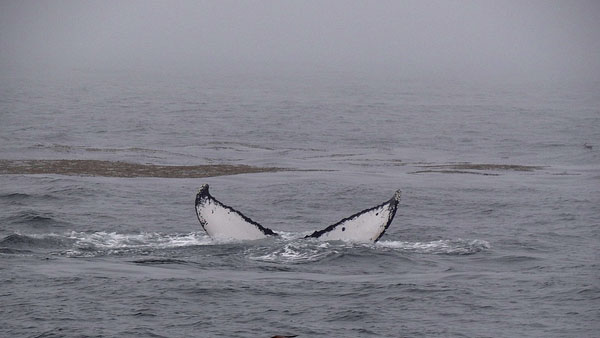
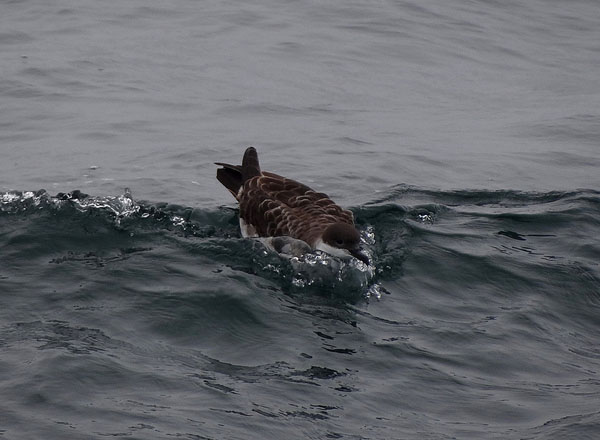
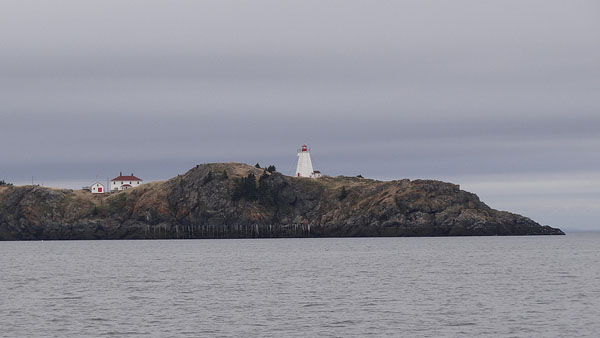
September 7: David Fisher from his on-going tour to Colombia
The Colombia tour is going very well. At one new reserve we saw five species of antpittas coming to feeding stations including the endemic Brown-banded and the beautiful Chestnut-naped (see below). High in the Andes at almost 12,470’ (3,800 metres), we watched Bearded Helmetcrests displaying - two reasons to be breathless (below). As well as searching for Colombian endemics, the group has also experienced such delights as displaying Andean Cock-of-the-Rocks at point-blank range, one part of a species list that has already topped 450 species. Colombia is a bird-rich place...
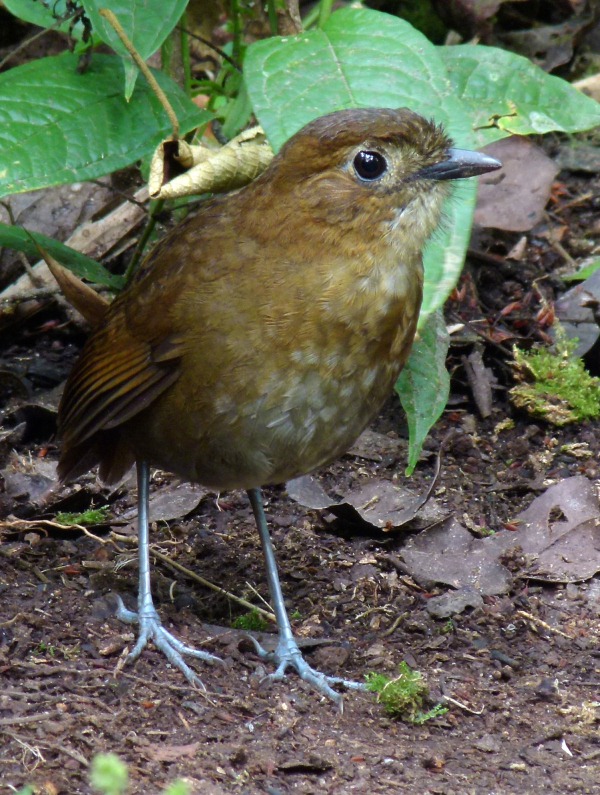
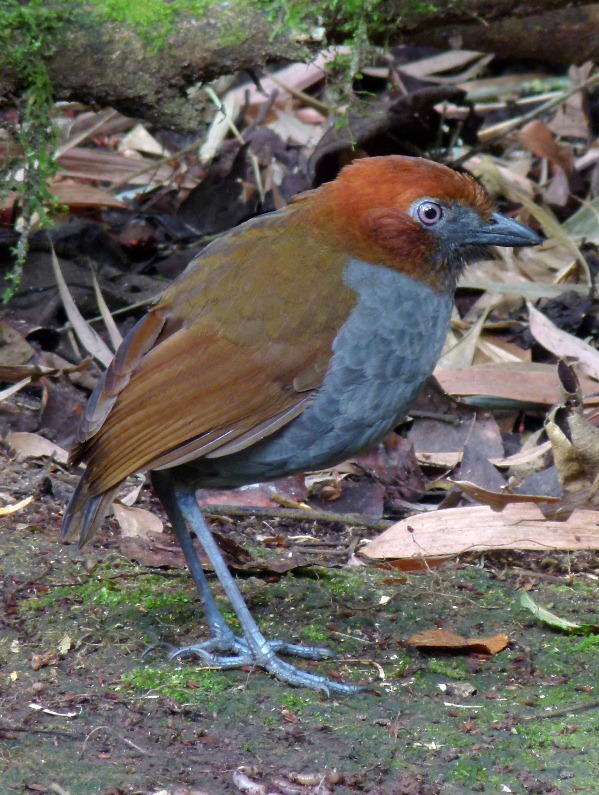
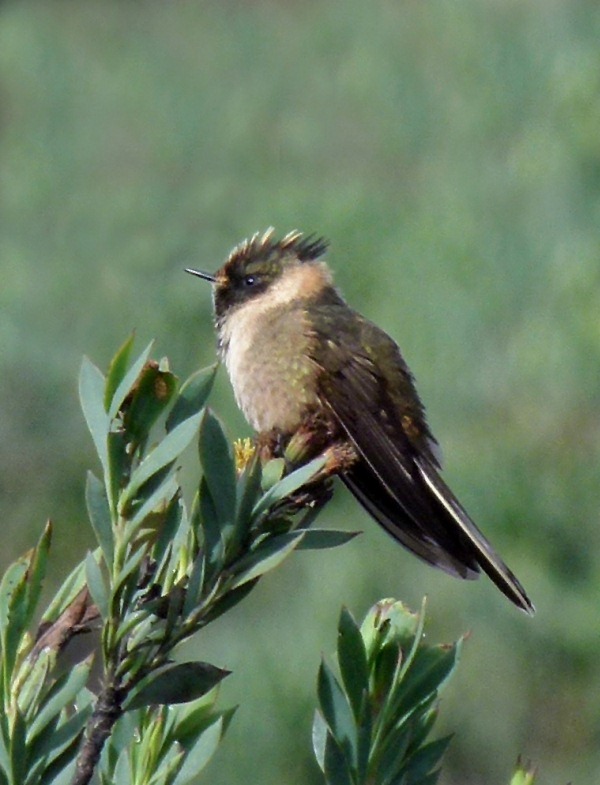
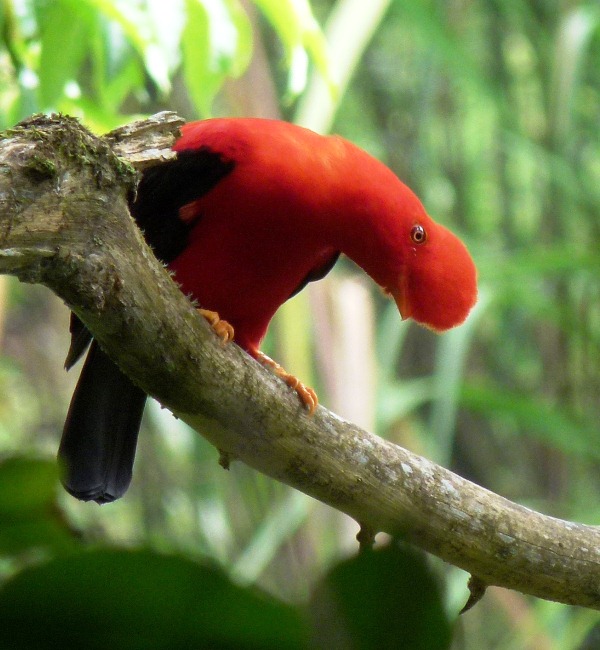
August 10: Rich Hoyer on his just-completed Birds & Shakespeare tour
A tour offering only five days in the field, with birding mostly confined to the mornings, may not sound like a lot of opportunity to see much, but the rich, coniferous forests, valleys, and lakes of southwestern Oregon (dipping for part of a day into California) presented us with a fantastic variety and many memorable moments. Combined with the five plays we saw at the superb Oregon Shakespeare Festival, this years "Birds & Bard" tour was a grand success. Each day's picnic breakfast (one pictured below in idyllic Fort Klamath) was coupled with some delightful birds, such as Mountain Chickadees one morning, on others White-headed Woodpecker, Acorn Woodpecker, Black-billed Magpie, and even Northern Pygmy-Owl. Sights such as a Mt. Ashland meadow full of wildflowers and alive with the chipping and chasing of Rufous Hummingbirds (photo below), or the spectacular Crater Lake with a family of Red-tailed Hawks soaring in freedom (photo below), will leave lasting memories. Of the plays, the commissioned All the Way about Lyndon B. Johnson's first months as president received high marks, as did the terrific Romeo and Juliet production, and the surprisingly successful medley combining Medea, Macbeth, and Cinderella.

